Anyone who has traveled long distances with a dog will tell you that it can be challenging at times, especially if you’re flying with dogs.

Dogs are not made to fly, and the experience can be stressful for both them and their owners. But flying is unavoidable at times, whether moving to a new city or going on an extended vacation.
If you do plan to take your dog on board, there are a few things you should know beforehand.
This comprehensive guide covers everything from tips for flying with dogs, the dos and don’ts of going through airport security with your pup, and everything in between you should know before traveling by plane with a dog.
8 Things to Consider Before Flying with Dogs
1) Is Taking Your Dog Essential?
According to Justine Lee, a veterinary expert for Pumpkin Pet Insurance, you should only purchase your dog a ticket to fly if it is completely necessary. She suggests that pets only fly on a plane if the owner is making a permanent move or taking a trip of two weeks or more.
Flying is an incredibly stressful experience for dogs. They’re suddenly thrust into a foreign place with lots of intense stimuli, and they have very little water to drink or go without using the bathroom for long periods.

If you’re not taking an extended trip or making a permanent move, it’s best to leave them at home.
Many of us have family or friends available to watch our dogs while we’re gone. If that’s not possible, consider a pet-sitting service or boarding your dog at a kennel. I know it’s challenging to be away from your pup, but ultimately this will save them a lot of undue stress.
2) How stress-prone is your dog?
The stress your dog can handle may be crucial in determining whether or not he can successfully fly. Of course, flying might be overwhelming for many dogs but not necessarily excessively stressful for all of them.
Anxiety levels and health conditions are not unique to humans – dogs can have them, too. When traveling with your furry friend, think of them as another person. Consider their reaction to sudden noises or movement, for instance. How settled are they in a carrier? In crowded places like airports, will they bark excessively or have accidents? Also, consider how quickly they adapt to new environments that keep changing around them.
3) Where will your dog fly – in the cabin or cargo hold?
Another crucial question to ask before reserving your dog’s flight is where they will be while flying. You have two alternatives: flying in the passenger cabin with you or shipping them in the cargo hold, either as checked baggage or cargo.
Flying in the cabin with you:
When flying with dogs, the usual guideline is that larger dogs are more expensive. That is because various regulations and limitations exist for canines weighing less than 20 pounds and those weighing more.

If your dog is small enough and meets the airline’s specific requirements, it may be able to fly in the cabin with you! This means your dog must be able to fit comfortably in a carrier that can go under the seat in front of you.
Small dogs that weigh 20 pounds or under may fly in the cabin with you as a carry-on item in a carrier that fits underneath the seat in front of you. The carriers must be airline-compliant or TSA-approved. According to Consumer Reports, this can cost anywhere from $30 to $250, depending on the make. In addition, there is usually a pet fee to bring your animal friend into the cabin, which unfortunately ranges from about $125-$150 each way, depending on your airline.
The advantage of flying your dog in the cabin is that they’re with you throughout the trip, you can check on them, and they’re less likely to get anxious. Cabin flying, however, might be costly, and you are only permitted to bring one dog onboard per flight.
Flying in the cargo hold:
Dogs that weigh more than 20 pounds cannot fly in the cabin and must go in the cargo hold or as cargo or as checked baggage. The price to fly your dog in the plane’s cargo section ranges from $150 to well over $1000. The cargo cost depends on the size of your dog, the airline you fly with, and your destination.
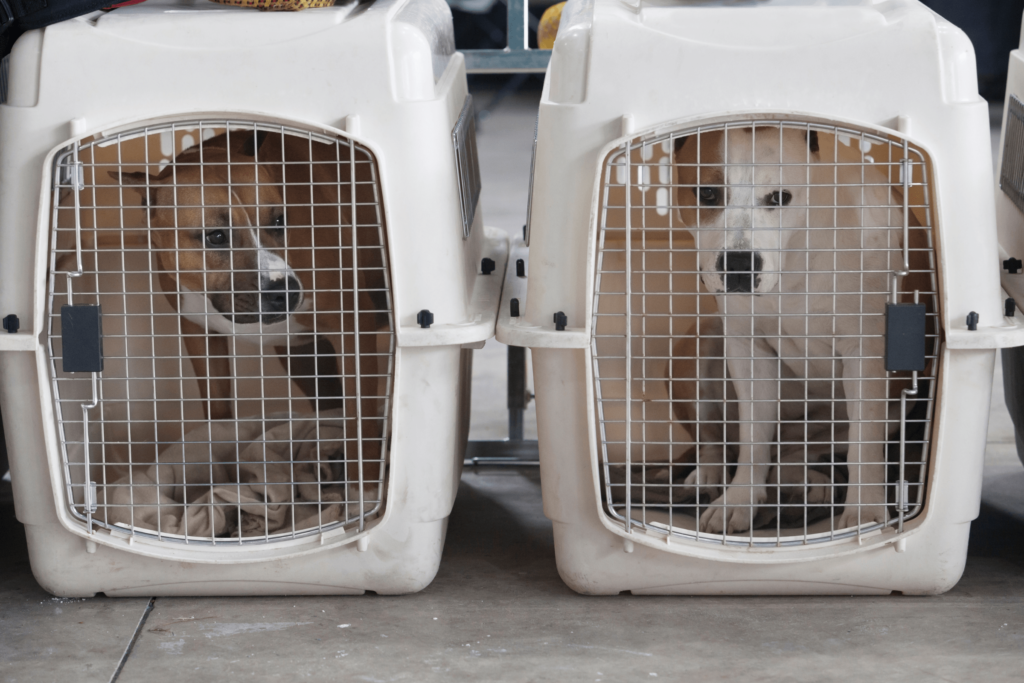
The cost of flying with your pet in the cargo hold largely depends on the size of their crate. To accurately estimate how much cargo flying your dog will cost, you’ll need to measure your dog from nose to tail and choose an appropriately sized carrier. Keep in mind that airlines usually charge by dimensional weight, so a bigger crate will typically mean higher fees. And while prices can vary depending on the airline you fly with, there are generally no off-season discounts for pet travel.
Although it can be a little tempting to save money by putting your dog in a smaller crate, all airlines and pet travel companies must follow the IATAv/LAR. If your dog’s carrier is too small, it won’t be allowed on the plane. After that, the container must be re-sized and put into a large enough carrier. A cost recalculation will occur only after that, resulting in an extra fee and possibly missing your flight.
Depending on the airline, the cargo hold – where pets fly – may be heated or cooled. Most airlines that allow animals have a temperature-controlled space similar to what is above in the passenger cabin; however, some do not provide this so that it can get extremely cold or hot depending on the season.
Therefore, I only recommend putting your dog in the cargo area as an absolute last resort (or look into a ground transport if possible) since many uncontrollable variables could make for an unpleasant flying experience despite how much carriers attempt to make all animals comfortable.
Not only are you away from your dog, but baggage may tumble in the plane’s cargo hold, making it even more distressing. In addition, the noise in the cargo hold may add to their stress.
As much as people might argue that many animals fly in the cargo hold annually without any trouble, there are several things beyond your control when giving your dog to airline staff.
To put it simply: Baggage handlers will do their job and load the plane – nothing more is guaranteed.
Even though some travelers have no problems flying with their pets, others have had to confront injury, illness, and even death while or following a flight in which they kept their pet in the cargo area.
Therefore, when taking their pet on a plane, I always recommend that pet owners consider whether the danger is worth it.
If you absolutely must fly your dog in the cargo hold, you can do a few things to make the trip as pleasant as possible.
First, book a direct flight during the cooler months to avoid sudden temperature changes, and place a note on your dog’s container that reads “Live Animal.” This “Live Animal” sticker will inform airline personnel to treat your pet with care.
Vets always recommend you avoid tranquilizing your dog before a flight, which can be pretty dangerous at elevations. If your dog has motion sickness, there are remedies accessible that can help with minor cases, such as the Thunder Shirt.
4) Why do airlines charge for pets?
Why do airlines charge pet owners to have their animals fly in the cabin or cargo area? Many animal lovers who are also pet owners (like me) get upset when they see airline fees for bringing pets on board.

Are the enormous expenses, however, truly necessary? If you ask many pet owners, they’d say no. After all, a typical round trip on most U.S. airlines costs more than $250 to keep your pet in the cabin.
Furthermore, flying your dog in a cargo hold is more expensive and hazardous. So, while the danger of something terrible happening to your pet is minimal, the risk is always there.
Animals can die during air travel; if a malfunction occurs in the cargo hold, that risk is considerably higher. Temperature and pressurization malfunctions, for example, might severely harm your pet or even take its life.
Unfortunately, the airlines must anticipate expenses.
I’m talking about everything from the extra fuel necessary to transport large dogs to operational and liability expenditures. These operational and liability expenses are only part of it. There’s no guaranteeing what might happen when a four-legged friend boards an aircraft.
Emergency landings are expensive for airlines, and they often have to make them when passengers travel with pets. For example, if another passenger has a severe allergy to dog fur, the airline must go through the expensive hassle of making an emergency landing to get treatment for that passenger.
Pets and airlines are unpredictable, which can lead to many problems, such as lawsuits if a pet bites another passenger. In addition, pets getting loose on tarmacs is not as uncommon as one may think. When this occurs, the airport must shut down, causing delayed and canceled flights – leading to lots of money lost for airlines.
5) Is your dog flying as your pet or an emotional support or service animal?
The FAA designates pets as cats, dogs, rabbits, reptiles, ferrets, hedgehogs, rodents, birds, and amphibians. If your animal is included in this list by FAA regulations, you will have to pay a fee to fly with them.
If you have a registered service animal (in this case, a dog), you rely on them for medical assistance. And for this reason, these dogs are usually considered to be working dogs.
Boarding with a registered service dog means that when flying, your dog would fly for free since the airline does not view them as companions.
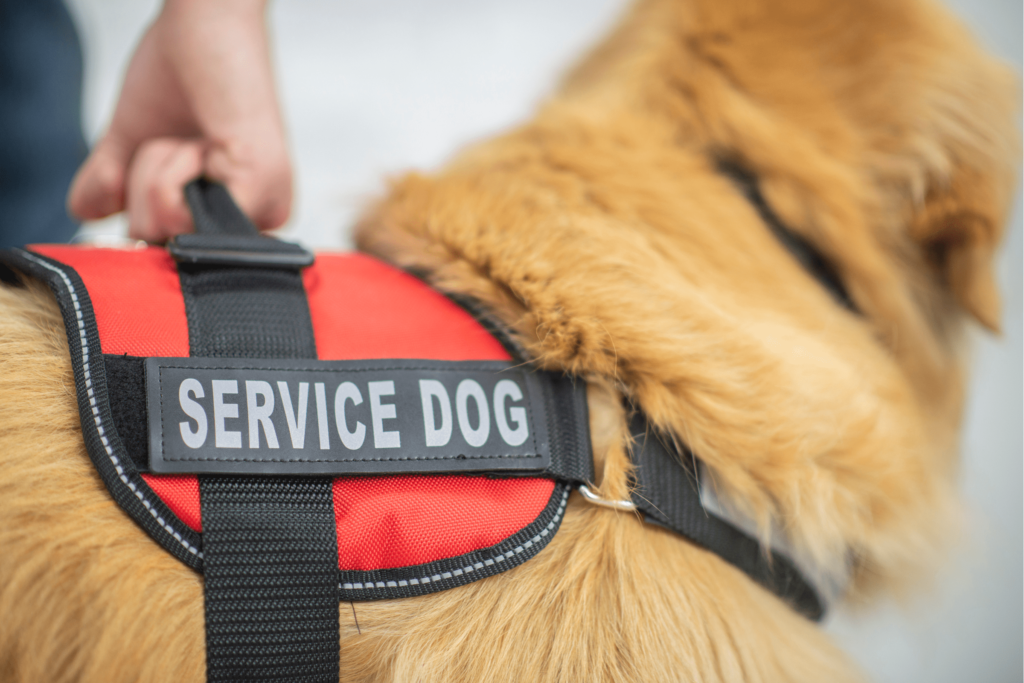
Although your dog doesn’t need a ticket, the airline may ask for a verbal assurance of your animal’s purpose and a doctor’s written confirmation before allowing them on board. In most cases, airlines require a health certificate which can cost $35 to $200.
Many find this particular FAA rule a bit confusing, and understandably so since technically, any of these animals could be flying with you for emotional support. But think twice before you claim your pet is an emotional support animal.
Over the years, many passengers have claimed their pets to be emotional support animals to avoid paying pet fees or bringing unusual animals like pigs, peacocks, squirrels, and snakes aboard their flights. That ended in December 2020, when the Department of Transportation banned all non-trained dogs from being recognized as service animals.
After the ruling, several airlines, for example, Alaska, American, Delta, Frontier, and Southwest Airlines, announced that they would no longer permit emotional support animals on their flights. Instead, if you want to fly with a service animal, you must fill out this DOT form.
6) Are you flying your dog overseas?
The cost of flying a dog overseas is between $800 and $900 on the cheap side, which rises to around $7,000, according to former IPATA president Derek Huntington (IPATA). However, this all depends on your destination and the size of your dog.
The cost of flying a dog across borders varies. The first is the airline itself, which charges various fees. In addition, many airlines now charge a “pet fee,” which covers the expense of transporting your pet. Depending on the airline, these pet fees can vary from $50 to over $200 each.
The other place you’ll be charged is by the country you’re flying to. For example, some countries such as the United Kingdom have an “Animal Reception Centre” fee. The Animal Reception Centre fee pays for the cost of quarantining your dog and the other necessary steps when bringing an animal into that particular country.
The USDA requires the use of an approved pet shipper, which adds $150 to the overall cost.
Finally, most international airlines demand that you use a third-party pet transportation service when visiting rabies-free places such as Australia, Japan, or New Zealand with your dog. Even the cost of transporting your pet by air may increase. It’s also critical that if you’re flying with your dog, the pet transportation service you choose is IPATA-approved.
7) Always check an airline’s safety records before booking a flight.
Putting animals in the cargo hold is risky, so do plenty of research beforehand. Alaska Airlines had the lowest pet incident rates between 2015 and 2020, including deaths, injuries, and loss.
This is despite transporting far more animals than its competitors. The overall numbers are still relatively small.
There were 112 animal deaths reported to the Department of Transportation during that period out of approximately 2.7 million pets that flew on U.S. airlines (the law requires all airlines to report animal-companion incidents that occur in the cargo hold).
Find out which airlines have the best safety records for your furry friends in this report by Veterinarians.org.
8) Understand rabies rules for dogs.
If you and your dog are returning to the United States from a country where rabies is prevalent, ensure that your dog’s rabies vaccination certificate is up-to-date. Airport staff will not accept expired certificates, and you’ll need to apply for a Centers for Disease Control and Prevention Dog Import Permit.

If you follow these CDC rules, your dog will be allowed back into the United States from high-risk locations: They must have a microchip and a U.S.-issued valid rabies vaccination certificate, they should be at least six months old, and they need to appear healthy upon arrival, and finally arrive at one of 18 approved airports.
Of course, it’s always best to consult with the country’s consulate or embassy about pet regulations before traveling.
If you’re looking to fly your pet to Hawaii specifically; however, keep in mind that quarantine is required since Hawaii is a rabies-free state.
Dos and Don’ts When Going Through Security with Dogs
When flying with dogs in the airplane cabin, there are some thing you should know about going through airport security. Make sure to understand the dos and don’ts before your flight!

Do
- Take your pet out of its carrier. Then, send the empty carrier through the security equipment.
- Hold your animal close to you as you walk through the metal detector.
- Take your pup out of its cage or carrier ff your he or she is being flown in the cargo hold of an aircraft. The cage or carrier will be screened separately by a screening officer.
- Assume responsibility for your pet and its behavior throughout the assessment.
- Speak to your air carrier or travel agent ahead of time to learn the airline’s policy regarding passengers traveling with pets.
Don’t
- Hand your dog to the screening officer to hold while you pass through security.
- Put your pet on the conveyor belt.
16 Tips for Flying with Your Dog
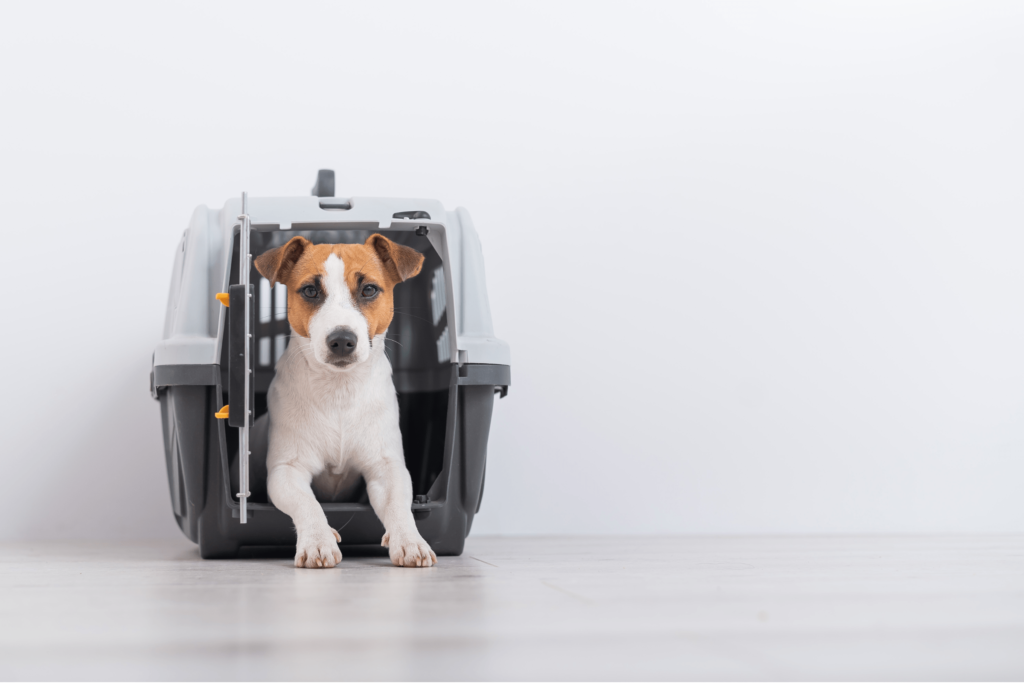
- Carrier-train Your Dog
- The first essential tip is to get your dog used to their carrier well before the flight. Similar to how you would crate train your pet, get them used to the kennel by making it a comfortable and safe space. By doing this, your pet will see the kennel as more of a den-like area they enjoy hanging out in.
- To help your pet form a positive connection with the kennel, feed them in it for a few weeks leading up to your journey. Then, to demonstrate that it is their space to play, sleep, and relax, put their bed and a couple of favorite toys inside. This will help to make the whole experience less stressful for them. I also recommend taking them on short car rides in the crate and continuing to give them treats, so they associate them with positive experiences.
- For the trip, line the kennel with a dog travel bed and cover it with puppy pads in case of an accident during transit.
- Have Your Dog Checked by a Vet
- You must book an appointment with your veterinarian prior to traveling with a pet. You always want to ensure your pet is in good health before flying.
- If you get the okay from your veterinarian to travel, make another appointment near your departure date. Then check with the airline and the state veterinarian at your destination to see what papers are necessary.
- It’s not unusual for airlines to demand a health certificate issued within ten days of departure.
- Budget for Your Dog
- Flying with a dog can be expensive. Most airlines charge a fee for bringing a pet on board, ranging from $125 to over $1000. This cost depends on the airline and where your dog stays during the flight. There are also additional charges for trips that require you to fly your dog internationally.
- Check with Your Airline to Ensure Your Dog’s Breed Isn’t Restricted
- Currently, more airlines than ever are enacting restrictions on which dog breeds can fly in a cabin. These often include “short-nosed” or brachycephalic breeds such as Boston Terriers, Boxers, Bulldogs, and others. If your short-nosed pet meets the size and weight requirements set by the airline, you may be allowed to fly with them in the cabin. However, it is always best to check with your airline beforehand to avoid any issues.
- Book Your Dog’s Ticket Well in Advance
- If you’re flying with your animal, booking your flight as early as possible is essential- some airlines only permit a limited number of pets per aircraft. This is especially true when traveling internationally with your pet in cargo; the paperwork and other requirements can often take months to finalize.
- Never Give Your Dog a Tranquilizer
- Tranquilizers are not suggested for dogs on airplanes since they may hinder a dog’s ability to regulate body temperature at high altitudes. Instead, consider CBD oil or treats (be sure to check the regulations about flying with CBD oil), calming drops, or a vest that will help you relax your pet if you’re concerned about their anxiety.
- Board Your Flight Early (if Allowed)
- If you travel with a pet, you may be eligible for early boarding. It might take some time to get yourself and your animal situated before your flight departs and having a few extra minutes may help you stay calm.
- Keep Your Dog’s Documents in Hand
- Keep all required documents for your pet readily available when flying, as each airline has different rules. This way, you can easily present the documents to staff members when needed.
- Find Pet Relief Areas
- Many airports offer pet relief areas to make things easy for you and your pet during long travel days. In fact, federal regulations mandate that airports with over 10,000 passengers must have pet relief stations in each terminal. So, before your flight, take a quick minute to map out the closest one to your terminal. If you’re not sure where they are, Alaska Airlines put together this helpful list of all the airports they service that have designated pet relief areas. You can also ask any airline member at the gate for help locating them. And suppose you want an airport with especially outstanding pet service. In that case, Denver International Airport is at the top of the American Kennel Club’s list of the U.S.’s most pet-friendly airports, thanks to its numerous pet relief areas.
- Keep in mind that if you’re taking your dog out for a walk, he or she may not want to go; most of the spots are indoors and on synthetic turf. Have a puppy pad handy if your dog decides to relieve itself outside the pet relief area.
- Buy Your Pup a New Chew Toy for Take-off and Landing
- If you’ve ever flown before, you know how painful the pressure changes can be on your ears. The same goes for our furry friends! If your dog starts pawing at their ears or shaking their head more than usual during take-off or landing, offer them a chew toy or some hard treats to help relieve the discomfort.
- Book a Direct Flight
- Always book a nonstop, direct flight if possible. The fewer stops and disruptions, the less stress for your dog. Choose a weekday flight if possible — airports are considerably quieter during the week. If your dog flies in the cargo hold, the time of your journey is important too. To avoid hot or cold temperatures on cargo hold trips, fly in the morning or evening during summer and midday during winter.
- Make Your Dog an I.D.
- Write your dog’s name, your home address, and your phone number on a tag and attach it to their carrier. Be sure to also include the address and phone number of someone who can be reached at your destination. Make sure your dog’s I.D. tags are up to date, too!
- A current picture of your dog is always a good idea to bring on a trip. This way, if there’s any issue during the journey, it’ll be much simpler for airline personnel or local law enforcement to locate your canine companion. Also, consider some form of permanent I.D. like microchipping them. Then, if they ever get lost (not just while you’re traveling), this will increase the chances the two of you will be reunited!
- Let Nature Take its Course
- We recommend feeding your dog four hours before the flight since a full stomach (and its aftereffects) may be unpleasant for them during travel. After that, continue giving them water up until departure (but make sure to empty the water dish before going through).
- If you fly your dog in the cargo hold, ensure you leave food and water dishes in their carrier. That way, an airline employee can take care of them if there’s an extended delay before or after your flight. Also, don’t forget to give your pup one more potty break before heading into the airport! Again, line the bottom of their carrier with a puppy pad for easy clean-up in case of accidents.
- Write “Live Animal” on the Top and Sides of the Crate
- Be sure to put arrows on the crate pointing up so that handlers know it should remain upright. On top of the crate, please write your pet’s name, destination address, and your telephone number, as well as whether you or someone else will pick them up.
- Ensure Airline Personnel Can Open the Carrier
- Make sure the carrier door is securely closed but not locked. This way, airline personnel can open it in case of an emergency.
- Pack Your Dog Some Food and Water
- To avoid an accident and spills, freeze a small dish or tray of water for your pet the night before you depart. By the time they’re thirsty, the ice will have melted.
- If this isn’t an option for you, you can always fill your dog’s water bowl at a nearby water fountain after clearing security.
- Regardless of whether you’re on a same or separate flight as your dog, tape a small pouch of dry food to the outside of their crate in case airline personnel needs to feed them during long flights or layovers.
Airline-approved Pet Carriers
To save you some time, I’ve included a collection of airline-approved carriers below whether carrying on your dog in the cabin or checking as baggage. Check these out to get an idea of what is approved for use with airlines so you know what works best for your pup before the flight!
Cabin-approved Carriers
- X-ZONE Pet Carrier
- Petsfit Pet Carrier
- Morpilot Pet Travel Carrier
- Akinori Pet Carrier
- Sherpa Deluxe Travel Pet Carrier
- Siivton Pet Carrier
- KOPEKS Deluxe Travel Carrier Backpack
- KONG 2-in-1 Pet Carrier Bag & Travel Mat
- Jesper Soft-sided Travel Carrier
Cargo-approved Crates

Conclusion
Flying with dogs can be a tricky process, but by following the tips above, you can make things a lot smoother.
Remember to always contact your airline in advance to find out their specific pet policies– each airline has different rules. Make sure to have your paperwork in order, including a health certificate and proof of vaccinations, and pack your pet carrier accordingly.
Your dog’s security and safety should be your number one priority when flying, so ensure they’re comfortable and safe during the trip. But, with some preparation, flying with your furry friend can be a breeze!
Did you find this informational guide helpful? What was most interesting to you? Let me know your thoughts below!
Related Posts
- How Does Flying Affect Dogs? (5 Things to Consider)
- Where Do Dogs Fly on Planes (Cargo vs. Cabin vs. Baggage)?
- What is the Cost of Flying with Dogs (Fees and Considerations)
- Flying with Dogs on Alaska Airlines (Pet Travel FAQs)
- What is it Cost to Fly a Dog Internationally?
- Everything to Know Before Flying With Big Dogs
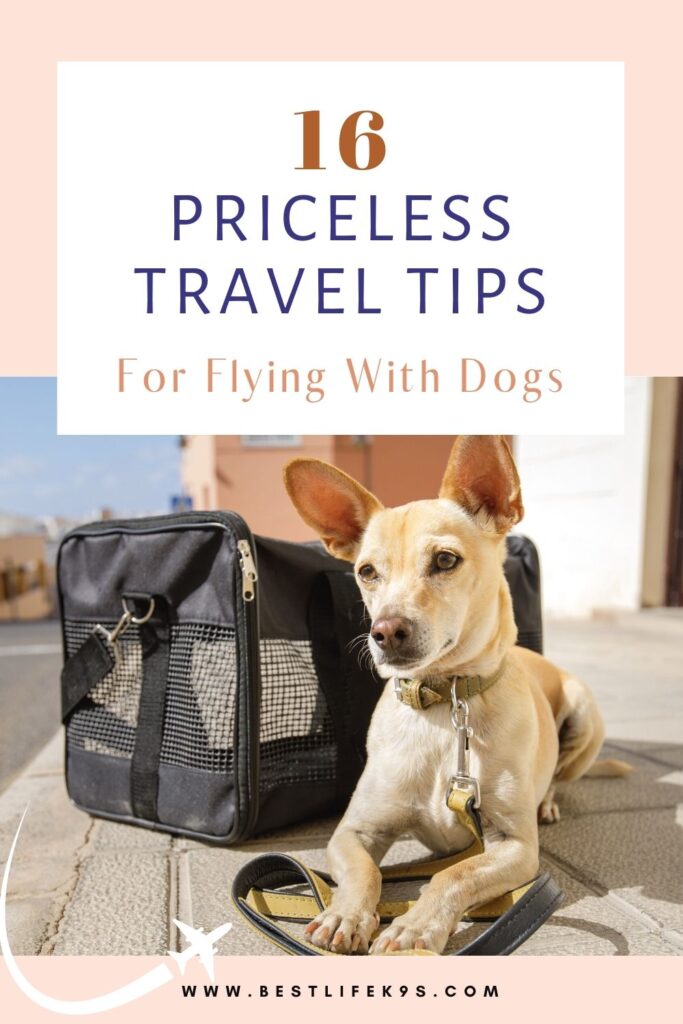
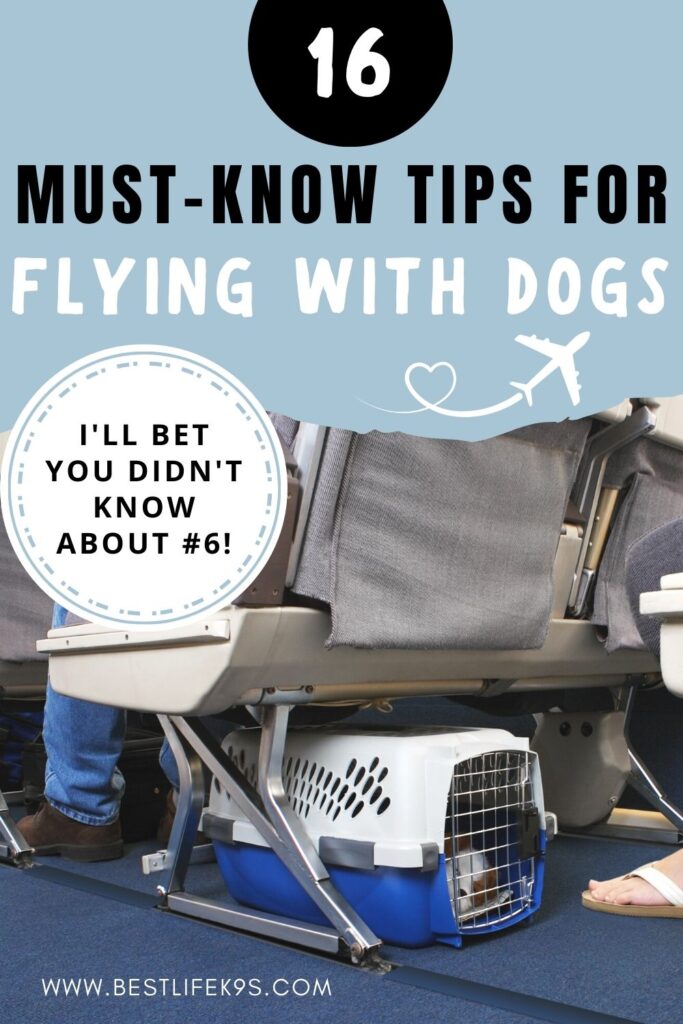

3 Comments on A Comprehensive Guide to Flying with Dogs: Tips, Rules, and Resources
Comments are closed.